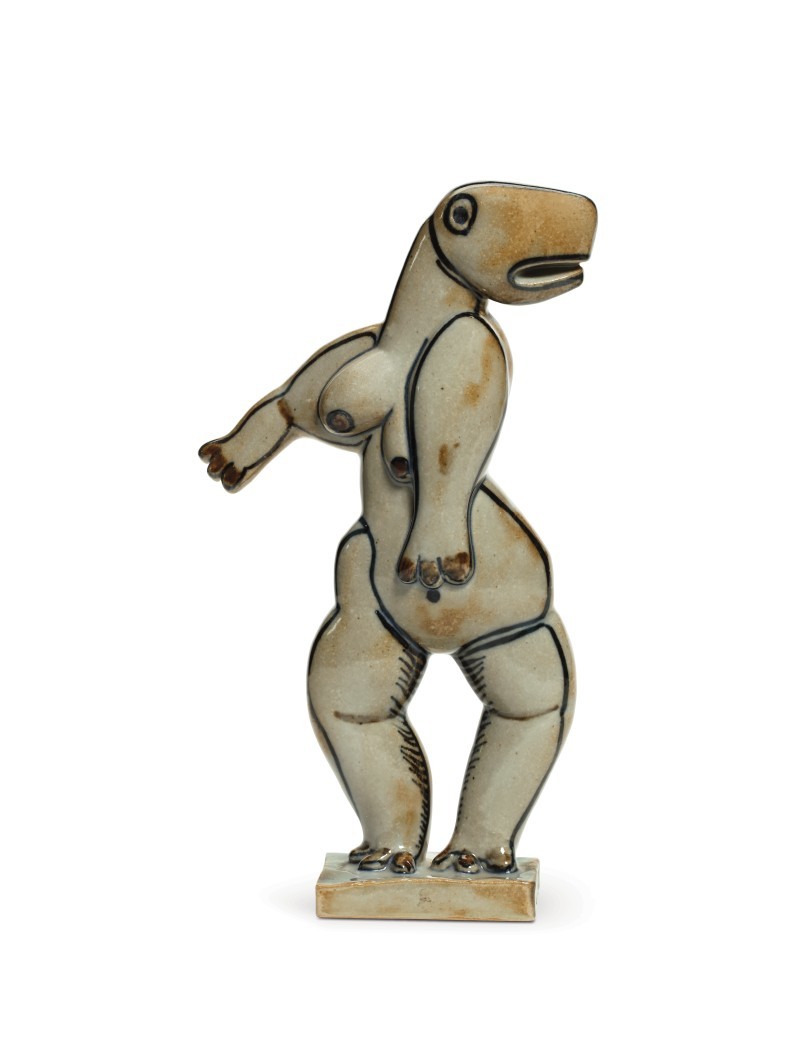Sten Lykke Madsen hat viele solcher phantastischen Figuren geschaffen. Stets sind ihre Körperteile mit dunklen Strichen konturiert und mit wenigen Binnenstrichen akzentuiert. Neben kleineren Plastiken führte Madsen auch großformatige Arbeiten für den öffentlichen Raum aus, z. B. den Brunnen „Sct. Jørgen og Dragen“ in Holstebro (1986).
Schenkung Hugo Ströh, Kiel, 2016
Inv.Nr. 2016.637
en

